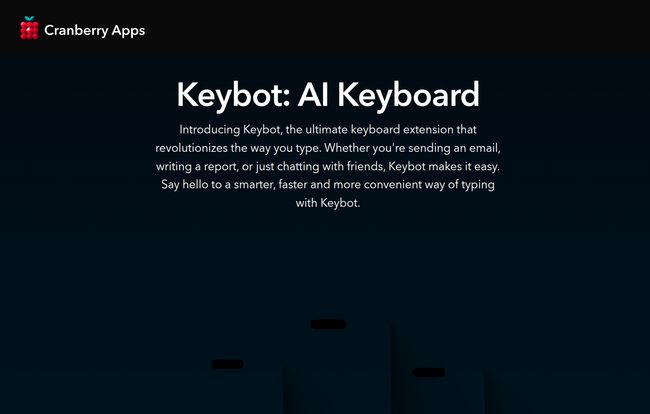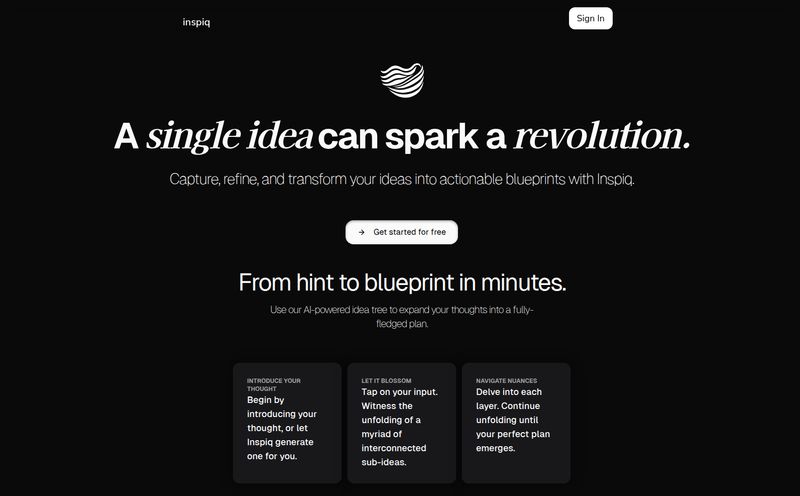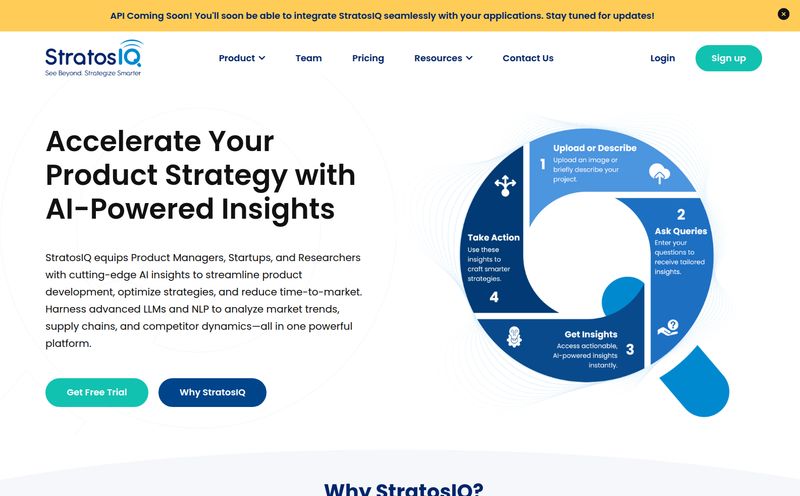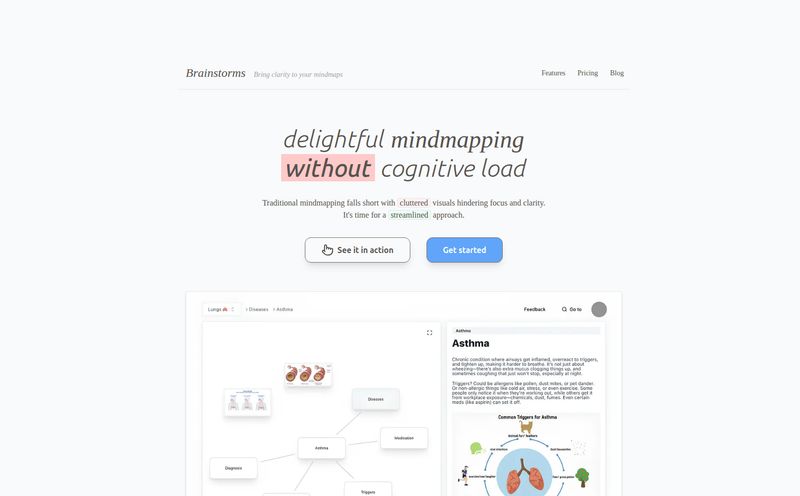We spend an absurd amount of our lives typing on our phones. Replying to emails, sliding into DMs, firing off Slack messages, writing… well, writing articles like this one. It's a digital lifeblood. And for all the incredible tech packed into our pocket-sized computers, the basic act of typing can still feel like a chore. Autocorrect has its moments of comedic genius (and utter failure), and predictive text is, you know, fine. But it’s not smart. Not really.
So, when a tool like Keybot from Cranberry Apps pops up on my radar, my ears perk up. It’s not just another keyboard with new themes or GIFs. The promise is an AI-powered keyboard extension. It's meant to completely change the game. But as someone who's seen a million 'revolutionary' productivity tools come and go, I'm naturally skeptical. Is this genuine innovation, or just more tech hype? Let's get into it.
What Exactly is Keybot? (Beyond the Marketing Spiel)
Okay, so on the surface, Keybot is a third-party keyboard you install on your phone, just like you would with Gboard or SwiftKey. But the difference is what’s under the hood. Instead of just predicting the next word, it uses artificial intelligence to help you write. Think of it less as a keyboard and more as a writing assistant that lives directly where your thumbs do.
You’re not just typing; you’re commanding. You could ask it to draft a polite refusal to a meeting invitation, or make a casual message sound more professional, or even expand a few bullet points into a full paragraph. All without leaving the app you're in. That’s the core idea—bringing the power of a tool like ChatGPT directly into your text fields. No more copying and pasting between apps. It’s a pretty compelling proposition, I have to admit.

Visit Keybot
The Typing Experience: Does It Actually Make You Faster?
The big question is always: does it work? The promise of being "smarter, faster, and more convenient" is a tall order. From what I’ve gathered, when it’s firing on all cylinders, the answer is a resounding yes. Imagine you need to send a quick, professional follow-up email after a call. Instead of painstakingly tapping it out, you could just give Keybot a prompt like "write a brief follow-up email to John about our call, thanking him for his time and saying I'll send the proposal by EOD friday."
Poof. There it is. A few taps to edit, and you’re done. It’s like your keyboard suddenly went to college and got a degree in business communication. For tasks that require a bit more thought than a simple "lol," this can be a massive time-saver. The potential for improved accuracy is also there, not just in spelling, but in tone and clarity. It helps you get your thoughts out more coherently, which means less time spent backspacing and rewriting. More flow, less friction. That's the dream, anyway.
The Elephant in the Room: APIs, Quotas, and Payments
Alright, let's talk about the tricky part. Nothing this powerful is ever truly 'free', and the FAQs on the Keybot page give us a peek behind the curtain. The tool's intelligence is powered by an API (Application Programming Interface), which almost certainly means it's piping your requests to a large language model like one from OpenAI. This is its greatest strength and also its' potential Achilles' heel.
"But ChatGPT is free, why pay?"
I see this question all the time, and it's a fair one. The free version of ChatGPT you use on their website is one thing; using its underlying engine via an API for a commercial product is another. API calls cost money. Plain and simple. Developers like Cranberry Apps have to pay for every single request their users make. So, when you pay for Keybot, you're not just paying for the keyboard interface; you're paying for the access to the powerful, and expensive, AI engine that makes it all work. It’s a classic case of paying for convenience and integration.
Navigating API Keys and Quotas
This API-based model introduces some potential snags for the average user. The FAQs mention things like "API key is expired or invalid," "API error," and "Insufficient_quota." These are terms developers know well, but they might be confusing for everyone else. Essentially, your usage is metered. It's not an all-you-can-eat buffet. If you use the keyboard a lot, you could hit a limit. This is a crucial detail to understand before you jump in. It's a tool for efficiency, but one you have to be mindful of.
Weighing the Good and the Not-So-Good
So, where do we land? On one hand, the upside is massive. The sheer convenience of having an AI writing partner built into every app is a genuine productivity boost. It eliminates the clunky workflow of switching between apps to get AI assistance. For people who write a lot on their phones, the time saved could be significant. It’s a tool that feels like its from the future.
On the other hand, the dependency on a third-party API brings some baggage. The potential for errors, expired keys, and usage quotas adds a layer of complexity that you don't get with a standard keyboard. Plus, as the FAQs hint, you might run into the occasional network error or in-app purchase glitch. It’s the price of admission for using bleeding-edge tech. It’s powerful, but it might not be as flawlessly simple as the default keyboard you’re used to.
Who is Keybot Actually For?
In my opinion, Keybot isn't for everyone. If your mobile typing is 90% emojis and one-word replies, this is probably overkill. You're not the target audience. But if you’re a professional who relies on your phone for real work? Then we’re talking.
I'm thinking of social media managers, freelance writers, real estate agents, small business owners—anyone who is constantly drafting professional communication on the go. If you find yourself frequently frustrated by the limitations of mobile typing for serious tasks, Keybot could be the exact solution you've been looking for. It bridges the gap between mobile convenience and desktop-level productivity. For me, as someone constantly replying to comments and drafting social posts, the idea is incredibly appealing.
Frequently Asked Questions about Keybot
Let's clear up a few common questions that seem to pop up.
How does the payment for Keybot work with API access?
While specific plans aren't detailed, the model involves paying for access to the keyboard, which in turn uses a paid API. Your purchase covers both the app's functionality and the cost of the AI processing your requests, likely up to a certain usage limit or quota.
What should I do if my API key isn't working?
The first step is usually to check if the key is entered correctly and hasn't expired. The app likely has a settings area to manage your API key. If problems persist, contacting Keybot's support through Cranberry Apps would be the next step.
Can I use a single Keybot purchase across multiple devices?
The FAQ section addresses this. Typically, app store purchases are tied to your account (Apple ID or Google Account) and can be used on any device logged into that same account. So, yes, you should be able to use it on your phone and tablet.
Why might I hit an "insufficient quota" limit?
This happens when you've used the AI more than your plan allows for in a given period. Think of it like exceeding your mobile data plan. To fix it, you'd likely need to wait for the quota to reset or upgrade your plan if that's an option.
What's the first step if my in-app purchase fails?
First, check your internet connection and payment method in your device's app store. Sometimes it's a temporary glitch. If it continues to fail, you should reach out to Apple/Google support or the app developer for assistance.
My Final Verdict
Keybot is an ambitious and genuinely useful tool for a specific type of user. It’s a fantastic glimpse into the future of how we interact with our devices, where intelligence is embedded right where we need it most. It's not a simple, foolproof tool for the masses just yet; the reliance on API keys and quotas introduces a learning curve.
But for the power user, the mobile professional, or the digital nomad who needs to be productive from anywhere? Keybot could easily become an indispensable part of your workflow. It has the potential to save you time, reduce frustration, and just make you better at communicating from your phone. Is it worth it? If you see yourself in that description, I’d say its definitely worth a look.
Reference and Sources
- Cranberry Apps Official Website - The developers behind Keybot.
- OpenAI API Pricing - For context on why API-driven tools have usage-based costs.



